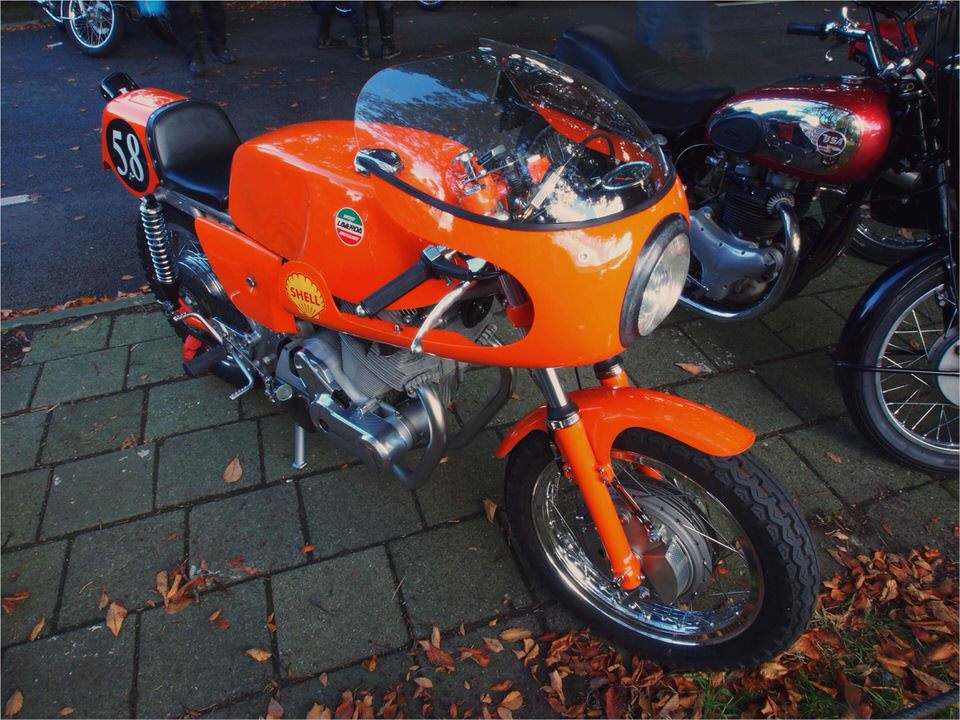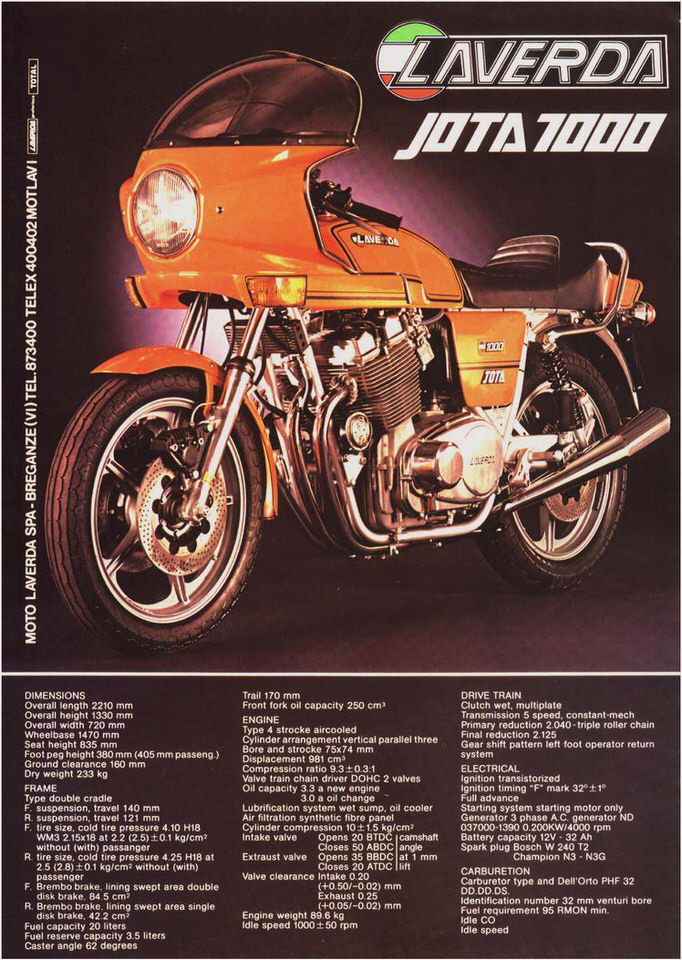I am ashamed to admit that, until very recently, the only Italian bike I had ridden was a Fantic moped. I guess that barely counts, so I certainly can’t speak with any authority about these things. Perhaps ignorance is bliss, but I would love to own a Jota. I am not even sure why, as I am certainly not a fast rider, But the things are legendary, and I would have to have one for the collection.
A three cylinder 1000, made by a tractor manufacturer, and named after a Spanish dance hardly sounds like a recipe for success, but the Jota was just that, on the track. At the time I used to watch quite a bit of proddy racing at Snetterton in Norfolk, and the Jota was raced in the Avon Roadrunner championship. Jota’s were big heavy vicious buggers, sensitive to a rider’s weight, and needed slapping about to get the best out of them.
The most successful rider I can remember at the time was Pete Davies(?), who was not that big, but somehow wrestled his gold bike into submission, and made it fly.
Competition came from the Honda CB900 (No, not a Fireblade!), Ducati 900’s and later on the injected GPZ1100 Kawasaki, particularly in the hands of Greg Page. Watching a train of these bikes going through the Bombhole at Snetterton was an experience. A good Jota was said to be capable of 150, but I never saw a proper road test that got more than 140. I think Mark Williams from Bike Magazine owned one himself, and compared it with the Suzuki 1000 which was just as fast, but a lot more civilised.
He preferred the Jota, because he knew damn well when he was going fast on it, while the Suzi gave little impression of its speed, and he felt it could get into trouble as a result.
The original bikes had 180-degree engines, firing two up and one down. Later ones had a 120-degree crank, like a Triumph Trident, and were less ballsy. A 1200 Mirage was also made, but in a less sporty state of tune. I have to mention the Montjuich, a 500 twin, which I guess I would describe as the Aprilia RS250 of its day.
A complete nutter’s bike, extremely loud, and another successful proddy racer.
A couple of years ago I saw an MCN test of a Jota against a Triumph Speed Triple, which was then seen as a 90’s Jota equivalent.

The test highlighted how things have changed in the braking and handling department, but left the Jota looking a bit defeated. The test annoyed me, and I would far rather have seen a test of a Jota against one of its old contemporaries, analysing why it was so good in its own time.
Lottery choice? The majority of late Jota’s were orange, and while I would have one of those if offered, I really liked the early 180 model in silver, with a twin seat, no fairing and a Bullworker to go with it.
Laverda is still alive and well and making interesting machines, for anyone who wants to own a bike that little bit different from the massed ranks of 600cc fours. Occasionally a rumour surfaces that they are about to bring out a three cylinder, large capacity sports bike – Sound familiar? Back in the present, the 750S Formula is a good alternative to a 600, and compares well with Ducati’s 750 models.
To hear more about the 750S, follow this link, and see what an owner has to say.
Laverdas the universe and everything

- Laverda Formula 500 – Classic Italian Motorcycles – Motorcycle Classics
- Faster and Faster: Memorable: Laverda 750 Formula S
- 1972 Laverda 750 SF For Sale Classic Sport Bikes For Sale
- The Laverda Jota 1000 – Classic Italian Motorcycles – Motorcycle Classics
- Classic metal: Laverda SFC1000-News & Reviews-Motorcycle Trader
